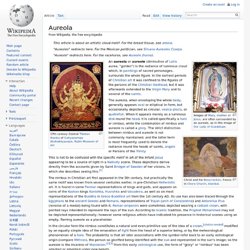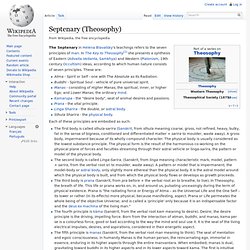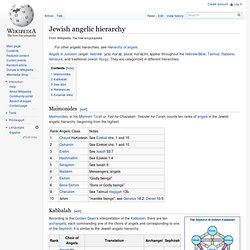

Aureola. This is not to be confused with the specific motif in art of the Infant Jesus appearing to be a source of light in a Nativity scene.

These depictions derive directly from the accounts given by Saint Bridget of Sweden of her visions, in which she describes seeing this.[1] The nimbus in Christian art first appeared in the 5th century, but practically the same motif was known from several centuries earlier, in pre-Christian Hellenistic art. It is found in some Persian representations of kings and gods, and appears on coins of the Kushan kings Kanishka, Huvishka and Vasudeva, as well as on most representations of the Buddha in Greco-Buddhist art from the 1st century AD.
Its use has also been traced through the Egyptians to the ancient Greeks and Romans, representations of Trajan (arch of Constantine) and Antoninus Pius (reverse of a medal) being found with it. Roman emperors were sometimes depicted wearing a radiant crown, with pointed rays intended to represent the rays of the sun. Eusebius. Sources[edit] Little is known about the life of Eusebius.

His successor at the see of Caesarea, Acacius, wrote a Life of Eusebius, a work that has since been lost. Eusebius' own surviving works probably only represent a small portion of his total output. Beyond notices in his extant writings, the major sources are the 5th-century ecclesiastical historians Socrates, Sozomen, and Theodoret, and the 4th-century Christian author Jerome. Holy Guardian Angel. Septenary (Theosophy) The Septenary in Helena Blavatsky's teachings refers to the seven principles of man.

In The Key to Theosophy[1] she presents a synthesis of Eastern (Advaita Vedanta, Samkhya) and Western (Platonism, 19th century Occultism) ideas, according to which human nature consists of seven principles. These are: Each of these principles are embodied as such: These seven principles can be grouped into a threefold division of Monad (transcendent Spirit, consisting of Atma and Buddhi), Ego (the higher immortal spiritual Personality, made up of the Higher Manas only) and Lower Quaternity (the mortal personality, the Lower Manas and the remaining principles). The Celestine Prophecy. The Celestine Prophecy is a 1993 novel by James Redfield that discusses various psychological and spiritual ideas which are rooted in many ancient Eastern Traditions and New Age spirituality. The main character of the novel undertakes a journey to find and understand a series of nine spiritual insights on an ancient manuscript in Peru. The book is a first-person narrative of the narrator's spiritual awakening as he goes through a transitional period of his life.
Summary[edit] The book discusses various psychological and spiritual ideas that are rooted in many ancient Eastern Traditions, such as how opening to new possibilities can help an individual to establish a connection with the Divine. The main character of the novel undertakes a journey to find and understand a series of nine spiritual insights on an ancient manuscript in Peru. Influences[edit] Publishing history, adaptations and sequels[edit] Redfield expanded the book's concept into a series, which he completed in three sequels: Category:Religion academics. Jewish angelic hierarchy. Angels in Judaism (angel: Hebrew: מַלְאָךְ mal’āḵ, plural mal’āḵīm) appear throughout the Hebrew Bible, Talmud, Rabbinic literature, and traditional Jewish liturgy.

They are categorized in different hierarchies. Maimonides[edit] Maimonides, in his Mishneh Torah or Yad ha-Chazakah: Yesodei ha-Torah, counts ten ranks of angels in the Jewish angelic hierarchy, beginning from the highest: Nephilim. Etymology[edit] In the Hebrew Bible[edit] The term "Nephilim" occurs just twice in the Hebrew Bible, both in the Torah.

The first is Genesis 6:1–4, immediately before the story of Noah's ark. The second is Numbers 13:32–33, where ten of the Twelve Spies report that they have seen fearsome giants in Canaan. The nature of the nephilim is complicated by the ambiguity of Genesis 6:4, which leaves it unclear whether they are the "sons of God" or their offspring who are the "mighty men of old, men of renown".
Interpretations[edit] There are effectively two views[15] regarding the identity of the nephilim, which follow on from alternative views about the identity of the sons of God (Bənê hāʼĕlōhîm): Fallen angels[edit] Main article: Fallen angel Some Christian commentators have argued against this view,[21][22] citing Jesus's statement that angels do not marry.[23] Others believe that Jesus was only referring to angels in heaven.[24] Second Temple Judaism[edit]